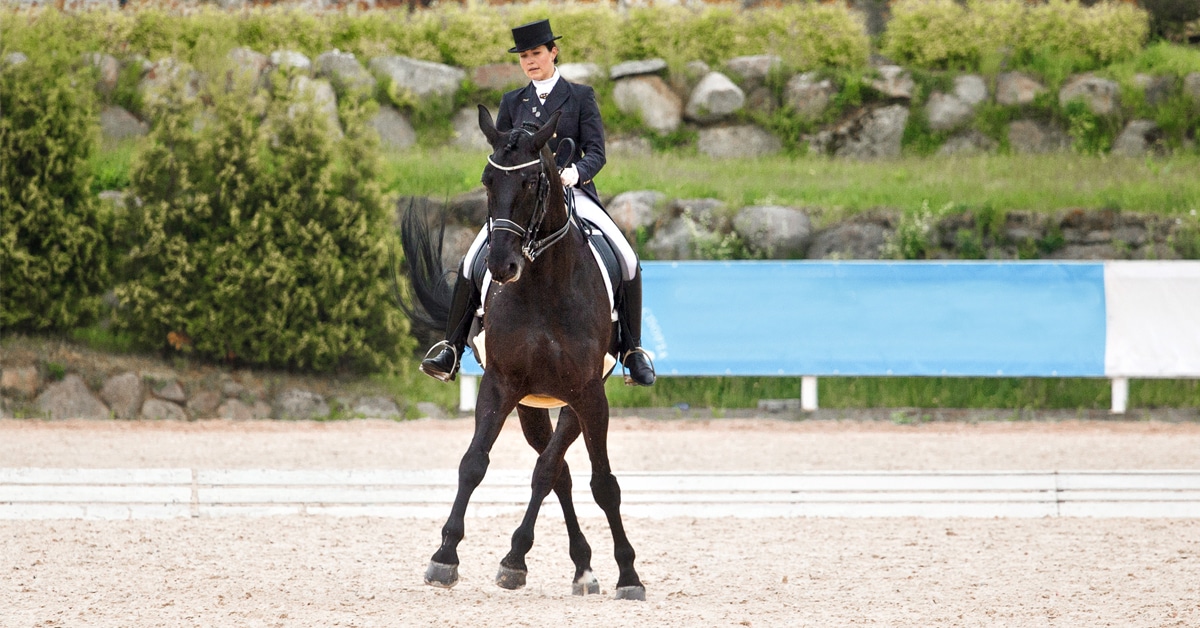Often times, horse owners feel their beloved equines are simply a magnet for injuries. Being accident prone just seems to be in their nature, most times brought on by their instinctive fight-or-flight response, their need to establish herd hierarchy, and in some cases, their sense of natural curiosity.
By spending time to minimize the various hazards found on your property through identification and removal, you’ll take one step closer to making your barn and property safer for your horse and eliminate any potential accidents that may occur.
“There is no such thing as an accident, they are only incidents,” says Dr. Rebecca Gimenez, Primary Instructor and President of Technical Large Animal Emergency Rescue Inc. (TLAER), based in Georgia. “No matter how unfortunate the situation, looking back, something somewhere probably could have prevented it from happening in the first place.”
Gimenez provides training in technical animal rescue techniques, procedures, and methodologies across the U.S. and internationally. In addition to publishing numerous critiques, articles, and journal submissions on horse safety, technical large animal rescue and horse handling issues, she published her first book, Technical Large Animal Emergency Rescue, in 2008.
She recommends that horse and facility owners become educated in both prevention and safety in order to identify any possible hazards and take the appropriate action beforehand to help offset an emergency visit from your veterinarian or even worse, having to resort to calling 911.
“The issue is usually having enough knowledge to understand where these hazardous problems lie and to act on them,” says Gimenez.
Farm properties can commonly become a catch-all for clutter and various safety hazards. Make it a habit to walk the property and be on the lookout for anything that could pose a problem should a horse connect with it. Keep an eye out for any sharp edges or protruding items such as nails, screws, torn metal, etc. Farm and maintenance equipment such as mowers, bailers, and harrows, should all be stored away in its proper place. Take the necessary steps to dispose of any clutter or debris that has been collecting along fence lines, laneways, or around the barn.
Walk your pastures and fill in any holes to prevent torn ligaments or a broken leg, as well as collect any discarded round bale netting or binder twine – it’s surprising how some horses like to munch on this. Also keep a look out for any potentially poisonous or toxic plants, such as tansy ragwort, nightshade, cocklebur, etc. While they may have not bothered with them in the past, a hungry horse without adequate pasture or hay will eat anything. Inspect not only your grazing field, but your hay as well. For a list of dangerous plants in your area, check with your local ministry of agriculture. If you are unable to tackle any of the potential hazards immediately, make note of your findings so that they are not forgotten.
For a complete list of identifying hazards on the farm, click here.
Hidden Hazards
Dusts, fumes, and vapours are hidden hazards that can have long-term effects on respiratory health for both horses and the humans who work around them. Poor ventilation can contribute to allergies and respiratory ailments including recurrent airway obstruction (RAO), better known as heaves.
“We’ve all been in barns during the winter, where all the doors and windows are closed up tight because of the cold,” notes Gimenez. “And this comes down to human comfort. We’re cold, so we think the horses are cold and close everything up. Without proper ventilation, the horses breathe in all that dust and ammonia. This is an unseen hazard that a lot of people don’t think about.”
A properly ventilated barn encourages correct airflow movement that expels stale air and pushes chemicals odors such ammonia out of the barn and allows fresh air to enter.
“I’ve seen people spend $100,000 on a new barn and put in cheap $10 box fans, which are also a huge fire hazard,” continues Gimenez. “Why didn’t they spend a bit extra and install overhead fans? Or bring in a ventilation expert to look at their place and evaluate a proper ventilation system that can release the fumes and help improve the air quality in that barn?”
High Risk Factors
Statistics show that the two most common emergencies affecting horse owners are trailer wrecks and barn fires, notes Gimenez. This is followed by entrapment-type emergency situations where the horse is stuck in mud or icy water, tangled in fences, or other around-the-farm situations where they become trapped and cannot remove themselves.
While a necessity, fencing is also a major contributor to hazards on the farm and inspection should be done as part of your daily routine. Don’t forget to check BOTH sides of your fencing and look for any protruding nails or wire, rotting posts, loose boards, dropped gates, etc.
“Make a habit of checking your fences regularly,” says Gimenez. “Not only can your horses injure themselves on broken boards or wires, but it only takes a stiff wind or the snow being so deep that the horses can just step over them, and then they’re loose. And a panicky, loose horse on the run can then open up a whole new set of emergency situations.”
Another danger that Gimenez warns of is housing horses in fields with ponds during the winter. If you are not able to relocate them to another area of the property, ensure that ponds are fenced off with some form of temporary fencing before they freeze over. There have been numerous incidents where a horse will walk out across a snow-covered pond and fall through the ice into freezing water. Sometimes it doesn’t end well.
“Last December, the Emergency Equine Response Unit in the Kansas City area had the horrifically tragic and difficult job of retrieving the bodies of three young horses out of a pond after they fell through the ice and drowned,” she says. “I can’t stress it enough, people have to fence off their ponds and keep them out of mud, ice and water.”
Don’t Fall Victim to “It Won’t Happen to Me” Syndrome
Accidents involving horses can happen anywhere, anytime, and it’s an unfortunate fact that many could have been prevented. By taking the time to identify and correct any hazards that may be found on your property, you’ll be in a better position to prevent any possible injuries that can arise. This saves aggravation on not only your horses, but also your pocketbook.
“I can’t stress it enough, take the time to educate yourself on accident prevention and maintain your facilities so as to minimize injury to your horses,” says Gimenez. “They will thank you for it.”
Interested in learning more? Equine Guelph will be hosting an Emergency Preparedness Workshop for Horse Owners in Guelph on Sept 18, 2014 followed by a Technical Large Animal Emergency Rescue Awareness and Operations Level Course on Sept 19, 20, 21.
Sign up for our free e-newsletter at EquineGuelph.ca, which delivers monthly welfare tips throughout 2014 and provides tools to aid all horse owners in carrying out their ‘Full-Circle-Responsibility’ to our beloved horses. In partnership with the Ontario Ministry of Agriculture and Food, Equine Guelph is developing a ‘Full-Circle-Responsibility’ equine welfare educational initiative which stands to benefit the welfare of horses in both the racing and non-racing sectors.
Visit Equine Guelph’s Welfare Education page for more information.
More News








